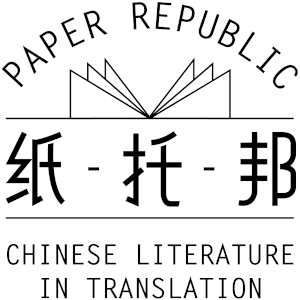THREE PERCENT 2012 Translation Database is FINALLY Online
http://www.rochester.edu/College/translation/threepercent/index.php?id=5002
So, a mere 10 months into the year, I’ve finally updated the Translation Database and just posted a new version of the spreadsheet for 2011 and posted the first version of the spreadsheet for 2012.
...
There are a few changes in the most translated languages rankings . . . Here’s the list from 2011:
French (63) Spanish (50) German (39) Japanese (23) Italian (20) Russian (19) Swedish (19) Arabic (15) Norwegian (14) Chinese (12)
And 2012:
French (57) German (50) Spanish (45) Italian (32) Arabic (25) Swedish (23) Russian (17) Portuguese (15) Japanese (13) Chinese (11)


Comments
In an article linked from Paper Republic in August, the Penguin China managing director was cited as saying that "Chinese to English translation now comprises the largest share of that small piece of [literature translated into English]." These statistics (which I think cover only fiction) show that not to be true, although frankly, I'm impressed that we're in the top 10!
Lucas
Lucas Klein, November 2, 2012, 3:14a.m.
As I've mentioned to Lucas before, I don't find 3 Percent's approach particularly revealing any more, because -- as I understand it -- it counts only those books "published" in the US.
People worldwide, including those physically in the US, can now buy translated Chinese literature from all sorts of platforms such as online bookstores, e-book downloads, etc. I'd bet some, perhaps many, of these books don't make it onto 3 Percent's database for one reason or another...
I'd say a better way of judging how "hot" Chinese literature in translation is would be to. . .make up a list of the newer titles that have appeared on Paper Republic!
Bruce, November 2, 2012, 4:56a.m.
you are giving your great efforts..
English to Russian translation
English to Russian translation, November 3, 2012, 5:25a.m.
Three Percent's calculations do indeed only tabulate literary translations published in book form in the US; it's not the only calculation possible, of course, but it is a significant one.
You're right that readers around the world can access literature online; this is the importance of literary journals in paper or in ones and zeroes. But when it comes to shelflife and readers getting to know about literature in translation, markets matter. This plays out in two ways: the US book market is separate from the London-centered English-language book market of the rest of the world, and unless readers encounter market-based announcements, advertisements, and reviews of literature, they're unlikely to know how to find it online. As example of how these two facts play out, I cannot find US-published Chinese literature in translation in bookstores in Hongkong, and while Americans who want to buy UK-published literature in translation can do so online, they have to be very motivated to even know that it exists. The problem we have, I think, is not in getting translations to the very motivated; it's motivating the less motivated to read translations at all.
The question for me is not whether Chinese literature in English translation is "hot" (it isn't), or how Chinese literature is doing in competition with Swedish or Spanish. It's whether readers in English can encounter enough literature in translation to break us our narrow parochialism. If only three hundred some translated novels are published in the US any given year, then I think we have a long way to go.
And that doesn't even begin to address the imbalance between fiction and poetry.
Lucas
Lucas Klein, November 3, 2012, 6:51a.m.